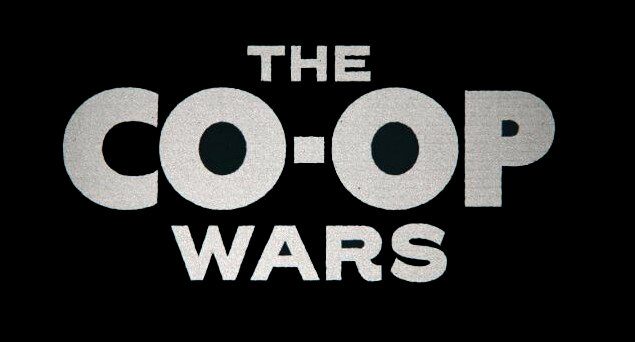The “Co-op Wars” story which we are covering in Radical Roots had an interesting parallel in the 1920s among the first wave of food co-ops in Northern Minnesota, in which another Communist autocrat tried to take over the co-ops for his own purposes. Except this was no secret leader of a tiny sect, this was Joseph Stalin himself.
Why did Uncle Joe care about co-ops in Northern Minnesota? To explain, I have to boil down a longer story well told in Origins and Legacies: The History of a Cooperative Movement by Cy O’Neil, which editor Dave Gutknecht is holding in this video. Food co-ops were one of many examples of working class self-help practiced by impoverished Finnish immigrants in the Lake Superior region. In 1917 Finnish radicals started a central buying club for the co-ops called the Co-operative Central Exchange (CCE) in Superior, Wisconsin. After World War I it grew like wildfire, helping co-ops improve their operations, producing a line of Red Star brand goods and running an education arm that included the young ladies of the Red Star Chorus.
Meanwhile in the Soviet Union, Joseph Stalin was trying to out-flank his rival for power, Nikolai Bukharin, on the left. He declared that world revolution was imminent, that social democratic allies should be attacked, and that “right deviationists” within the party should be purged. He purged the leader of the Workers (Communist) Party of America (WPA). The WPA then began demanding money from the CCE, even suggesting that the “donation” be hidden from non-communist members. The WPA’s cell in the CCE refused, which set off a struggle between the Stalin loyalists in the national party and the grassroots communists in the Finnish-American movement.
The Stalin loyalists brutally attacked their opponents in the pages of the main Finnish-American socialist newspaper for months and even summoned some CCE members to Moscow for in-person persuasion. The 1930 CCE general meeting was chaotic, with speakers heckled and fist fights breaking out, but the Stalin faction was soundly defeated and the Exchange broke with the WPA.
While many members kept their socialist principles, the CCE dropped the hammer and sickle from the logo of the Red Star product line, replacing it with the twin pines of American cooperation, and soon dropped the red star itself, replacing it with the word “Co-op.” They also became more open to the idea that the co-ops were part of a consumers movement instead of a specifically working class struggle.
In the end the Stalinists had, through their authoritarian tactics, created the opposite outcome than what they had intended, much like the CO did in the Twin Cities of the 1970s.
Help us share the important story of how the co-ops became what they are today by donating at Seed & Spark, and following us on Facebook, and Twitter.


